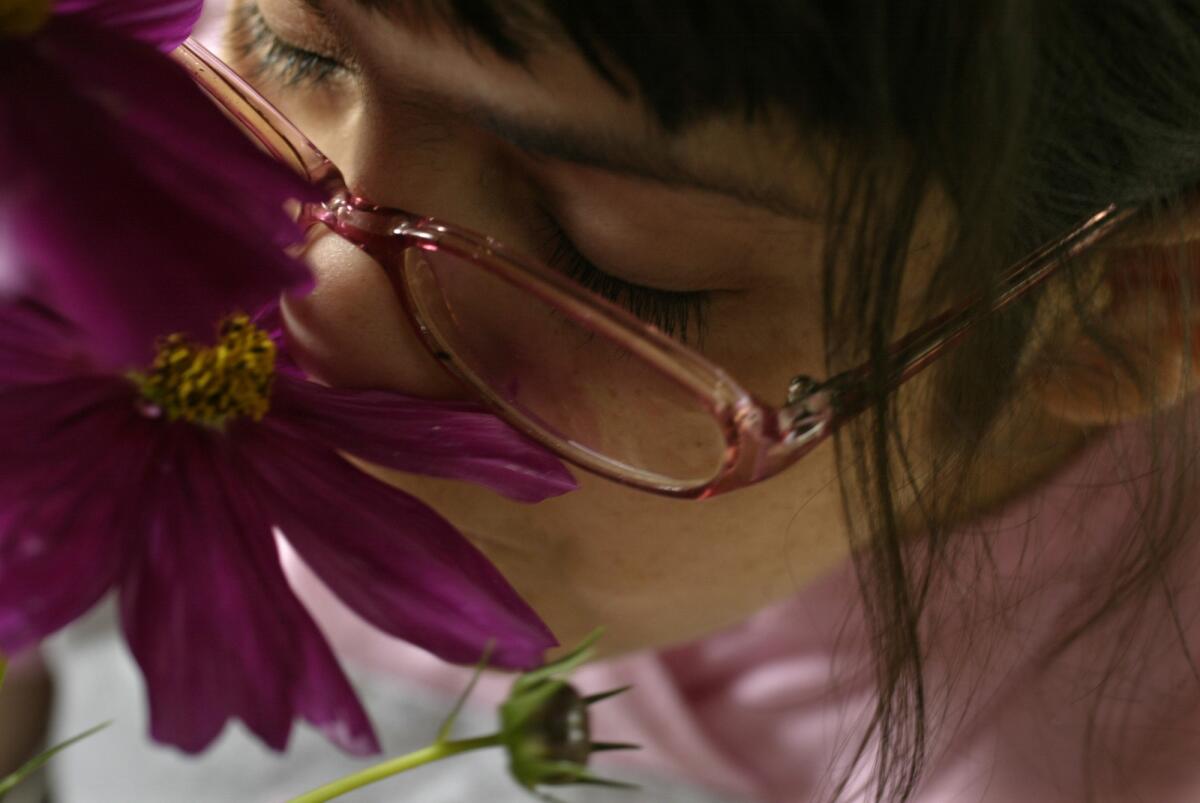Humans can sniff out 10 basic odors, scientists say

- Share via
It might seem that the range of scents humans can detect is infinite, but scientists have managed to sort them all into 10 basic categories, ranging from peppermint to pungent.
The classifications are meant to be the olfactory equivalent of the five basic tastes (sweet, sour, salty, bitter and umami).
To come up with the 10 scents, neuroscientists turned to a 30-year-old database that contained profiles of 144 odors. Each odor was assessed by human subjects, who were given a list of 146 words and asked to rate how well each word described the odor. The researchers wanted to see if they could look for patterns in those responses that would help them group the odors into distinct categories.
Using statistics, they analyzed how the 146 words were used and how they were related to one another. Some words were almost always used together, like “fruity” and “honey.” Others were rarely or never paired, like “fecal” and “minty.” Words that were hardly used at all were ignored in the analysis.
By the end of the analysis, the researchers came up with total of 10 distinct groups of words that tended to be used together.
The researchers then identified the key word in each group that described the fundamental characteristic shared by all the group members. (For example, “rose,” “floral,” “fragrant” and “violet” belong to the same group, but all of them can be described as “fragrant.”)
“It’s sort of like what’s happening when you compress an image or audio file,” said Jason Castro, the neuroscientist at Bates College in Maine who led the effort. “You dump all the redundant stuff and keep only the most essential information.”
The result was a list of 10 key odor categories: fragrant, woody/resinous, minty/peppermint, sweet, chemical, popcorn, lemon, fruity (non-citrus), pungent and decayed.
“For any given odor, we can assign it to one of 10 of these perceptual buckets,” said Castro, who reported the results this week in the journal PLOS ONE.
Odors in the fragrant category included lavender, soap and cologne, while freshly cut grass and mushrooms gave off a woody/resinous smell. Eucalyptus, camphor and tea leaves were considered minty/peppermint scents. Sweet odors included vanilla, almond and chocolate. Kerosene and ammonia fell into the chemical category.
Butter, molasses and fried chicken were lumped into the popcorn group. Oranges and other citrus fruits were grouped as lemon odors, while the other fruits went into their own category. Rounding out the list were pungent odors like garlic and sour milk, and decaying smells such as rotten meat and manure.
Each odor in the database fell into only one category, but it’s possible that other odors – such as kettle corn or coffee -- might belong to multiple categories, Castro noted.
The researchers have not yet tested these categories on people to see whether humans would make the same distinctions. But there is reason to believe they might, since the categories were not completely subjective. As part of the study, Castro and his colleagues examined the chemical structures of odors in the woody/resinous group using data from earlier studies. They found that several of these odors had similar chemical structures.
This surprising finding suggests it may be possible to predict how a chemical will smell based on how it’s built.
If so, that would have practical applications, Castro said. For instance, it could be useful for developing devices that “sniff out” cancer and other medical conditions.
In the meantime, scientists need to investigate whether the 10 categories can describe more odors, said Leslie Kay, a neuroscientist at the University of Chicago who wasn’t involved in the study. The 144-odor database “is still a small collection of the odors we encounter in our world,” she said.
What’s more, the odors tested consisted of only one type of molecule. In reality, most odors contain dozens of types of molecules.
“There could be a whole other level of complexity,” Castro said.
Still, the new scheme is “very good first step,” Kay said. “It’s like finding the color wheel for odor. It’s immeasurable.”
Twitter: @mmpandika



